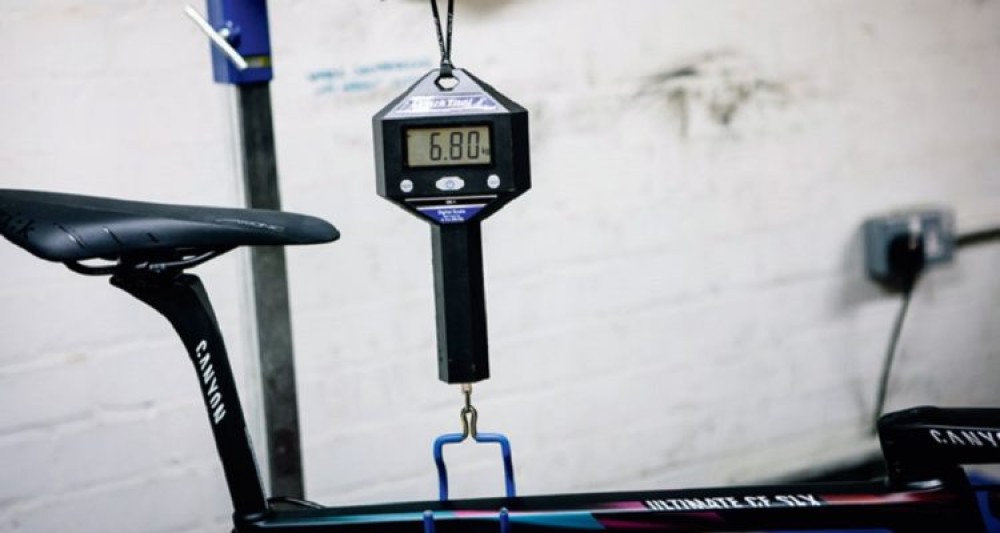The latest launches from the main bicycle brands point to a new trend. They once again give importance to the lightness of bikes, something that users have been demanding after the last five years in which bicycles have gained weight, to the point of making the weight information disappear from most of the brands’ technical sheets.
To explain the problem of the increase in weight of bicycles in recent years we have to look back more or less a decade ago. A time in which carbon bikes had not yet reached the levels of development that we see now in practically any model and the brands’ engineers were in the process of learning how to obtain the best benefit from black fibers, inheriting in many cases designs that derived from the previous era of aluminum bikes.
In any case, following the trend of that aluminum era, the bikes were refined to the point that the UCI established a minimum weight of 6.8 kg for those used in competition and that left us images as famous as those of that campaign. from “Legalize my Cannondale”, with which the Saeco cyclists claimed that their bikes were safe despite lowering the aforementioned weight barrier.
In fact, even those of cyclists were lighter than those of professionals at that time, not being strange mounts that were around 6 kg. However, the arrival of aerodynamics was the first point that began to put weight aside.
The various studies in the wind tunnel and field tests made it clear that by working on wind penetration greater gains were achieved than by tightening the weight. In any case, climbing bikes were still the protagonists of the ranges and all of them had a light model and an aerodynamic model, heavier, but more efficient at high speeds.
And then came the disc brakes, which meant adding about 1 kg to the bikes at once, that was in the high range, because the toll in grams when we got off the top bikes was even greater. Added to all this was that aerodynamics was extended to all bikes, leaving the stylized pure climbers aside.
The finishing touch has been put in recent seasons by completely internal wiring, which has meant more cumbersome control panels that can be drilled and thus pass the cables, as well as complex steering systems to pass those same cables through it, with the same result, more grams on the scale.
In fact, in recent campaigns it was strange to find in the peloton, we are talking about the professionals, that the bicycles dropped below 7 kg, with certain aerodynamic models that even went beyond 7.5 kg. A toll that is too great despite the improvements obtained in aerodynamics, in a world in which every marginal gain adds up and weight is an important factor, especially with races that increasingly seek climbs with impossible percentages where weight becomes be very relevant.
Return to lightness
After many years advancing on the path of aerodynamics and with the possible improvements at this point increasingly reduced given the limitations imposed by the UCI regulations, the time has come to return to the path of weight, but with the premise to maintain everything achieved in aerodynamics, as well as other qualities such as rigidity and absorption, during the previous years.
As usual, Specialized has set the line to follow. With its Tarmac SL7 it unified the climbing and aerodynamic lines in a single model and now, with the recent launch of its Tarmac SL8, it has delved into the lightening work to achieve a machine that is even more efficient against the wind than its predecessors, but that in The standard mounts easily approach the UCI limit in the official weights without pedals or other accessories, which in running order means adding between 200-300 g more.
A line of work that has also been followed by another elitist brand such as Factor, which a few months ago launched its new Factor O2 VAM, which evolved its climbing bike with intense tuning work, to which some aerodynamic characteristics of its Ostro VAM treadmill were added. .
Orbea has chosen a very different path, which has clearly opted for the weight parameter, creating in its new Orbea Orca, a pure climbing bike with minimal concessions to aerodynamics that are reserved for its Orca Aero model.
Cannondale was another of the brands that at the beginning of the year presented the new generation of its SuperSix EVO with the same objective, to subtract grams from the scale without losing the aerodynamic characteristics of the previous bike that, in its day, was a true trauma for users, as they went from one of the last bikes that maintained a classic appearance to a bike with a clearly aerodynamic cut.
The last to join this new trend was just a few days ago the Italian Bianchi, a brand that in recent times had also clearly opted for aerodynamics with its spectacular Oltre RC and which during the Vuelta a España has shown in some stage the prototype of a lightweight bike, although it retains much of the aerodynamic attributes of its sister.
Even so, it is difficult, given the importance of wind penetration in modern competitive cycling, contested at very high speeds, for us to see again in the short term that image of team mechanics weighing down the bikes to be able to reach the finish line. minimum required weight.
However, we cannot forget that materials continue to evolve, as well as manufacturing capabilities that achieve increasingly compacted and rigid carbons, which allows material to be reduced without losing properties. Therefore, who knows if in a few years we will not be talking about the 6.8 kg limit set by the UCI again. Time will tell.
Fuente: http://www.brujulabike.com

